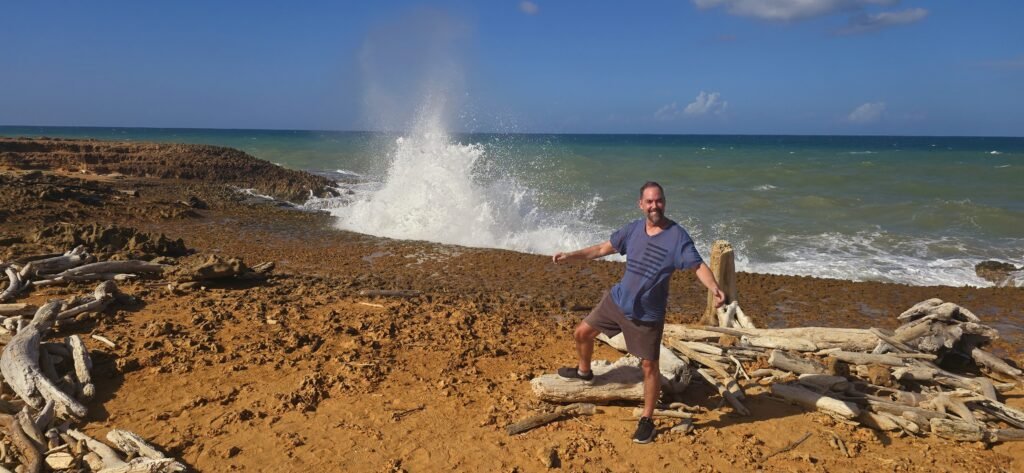Guajira is a captivating and unique region in Colombia, located in the northernmost part of the country where the Caribbean Sea meets the desert. It offers an array of breathtaking natural landscapes, from arid deserts to pristine beaches. Guajira is an increasingly popular destination for tourists seeking adventure, natural beauty, and a deeper connection to indigenous cultures.
Guajira is home to the Wayuu people, an indigenous group known for their vibrant culture, unique traditions, and colorful woven textiles. A visit to Guajira offers the opportunity to immerse yourself in Wayuu culture. You can visit a traditional Wayuu village to learn about their customs, beliefs, and social structures, and even participate in activities like learning to weave or prepare traditional dishes.
Do note that this area has basic lodgings and it takes many hours in a jeep over very bad roads to get to the different locations so this is an adventure trip, not an easy journey.
The tours for Guajira leave from either Santa Marta or Riohacha. As Santa Marta is about 3 hours from Riohachi expect the tour to start from Santa Marta about 5am and from Riohacha about 8am.
For information about Santa Marta see: Santa Marta
Riohacha
There are a few flights a day to and from Riohacha from Bogota or Medellin (about an 1 and 1/2 flight). The Riohacha airport is a small airport. It is about a 15 minute cab ride to the center of Riohacha and costs COP 15,000.

Riohacha is a captivating destination that blends beautiful natural landscapes with rich cultural heritage. Located on the Caribbean coast, this vibrant city offers a unique mix of beach relaxation, indigenous culture, and outdoor adventures.
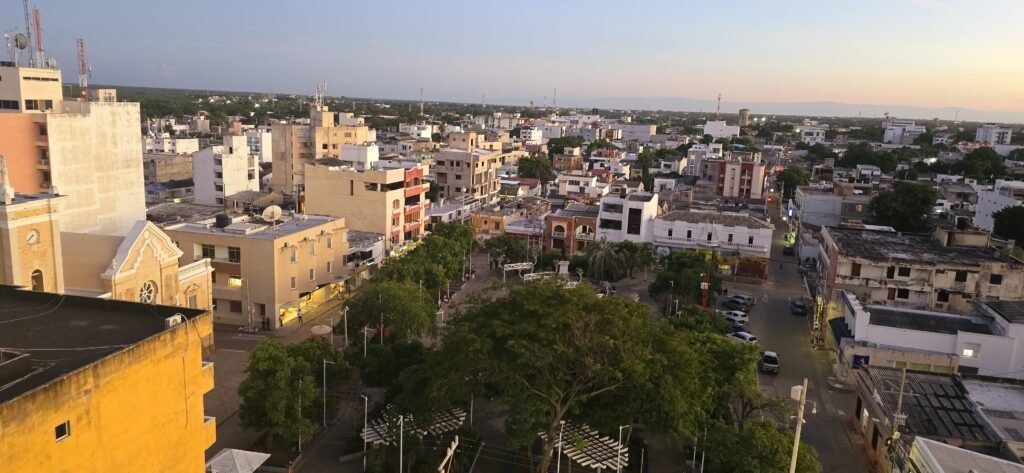
Riohacha has a number of golden-sand beaches along the Caribbean coast. The city’s beaches are not as crowded as other tourist hotspots like Cartagena or Santa Marta, they offer a peaceful and relaxed atmosphere. Playa de Riohacha, just outside the city center, is ideal for long walks, kite surfing, or simply enjoying the warm sea breeze.

Riohacha has a rich history that reflects its colonial past and its indigenous roots. Riohacha Cathedral with its beautiful architecture, is located in the city’s main square. The Casa de la Cultura, a museum dedicated to the history and traditions of La Guajira, offers fascinating exhibits on the region’s indigenous cultures and colonial history.
You can also visit Plaza Almirante Padilla, a lively square with shops, cafes, and restaurants, where you can experience the local vibe and try traditional food like arepas de quest or ceviche made with fresh seafood.
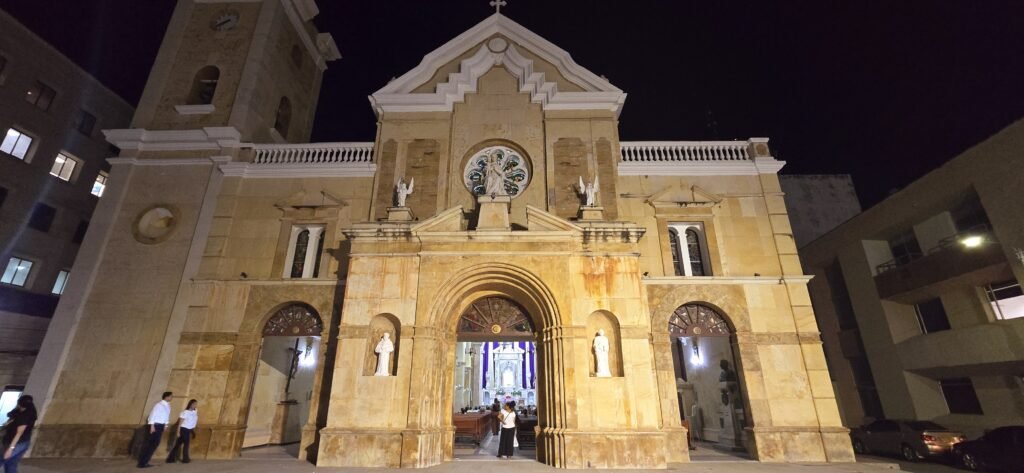
The main tourist area is the boardwalk. There are a number of restaurants and shops that line to road along the beach and a few piers to walk out on.
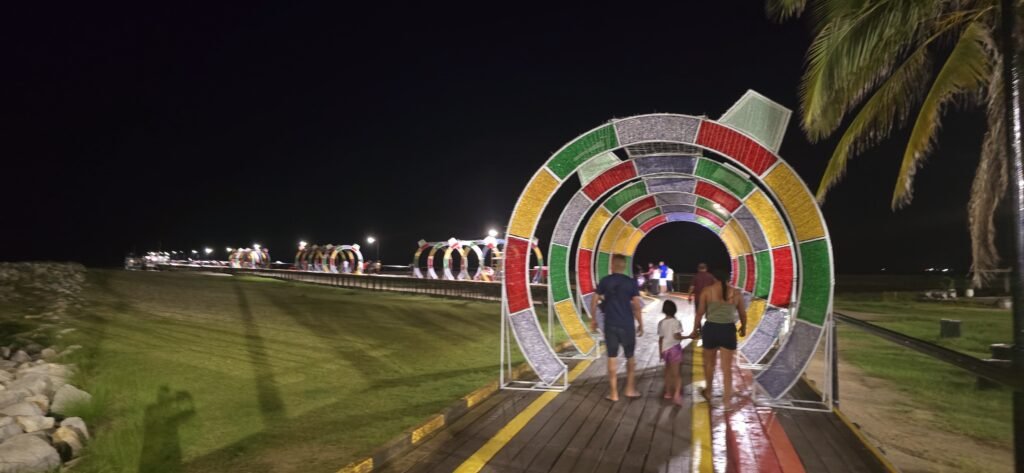

Riohacha’s cuisine is a fusion of Caribbean and indigenous flavors, with an emphasis on fresh seafood, coconut, and yucca. A local delicacy is the arroz con camarones (rice with shrimp) or pescado Frito (friend fish). The coastal location makes the seafood some of the freshest in Colombia.
Compared to the more famous Colombian cities, Riohacha offers a laid-back vibe, with friendly locals who are proud of their cultural heritage and eager to share it with visitors. Whether you’re walking along the beach, visiting local markets, or interacting with indigenous communities, you’ll likely experience the warm hospitality that Colombia is known for.
Tour Day 1
The tour picked me up at my hotel in Riohacha in a Jeep and we hour drive about an two hours from Riohacha to the Manaure Salt Mines
Manaure Salt Mines
The Manaure Salt Mines are one of the largest and most significant salt extraction sites in Colombia.
The Manaure Salt Mines have been a source of salt since pre-Colombian times, with indigenous Wayuu people using the salt for trade, food preservation, and ceremonial purposes long before Spanish colonization.
The salt mines were formally developed under Spanish colonial rule in the 16th century and have remained an important resource for the region ever since.
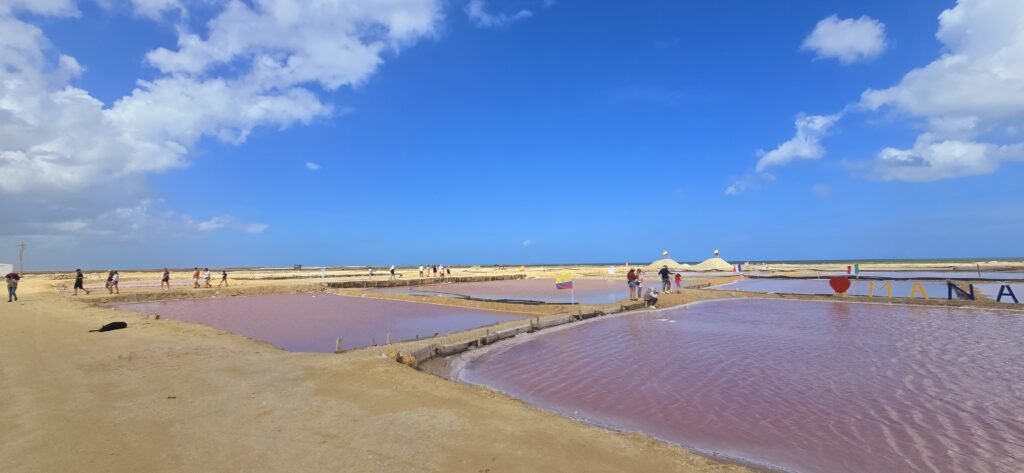
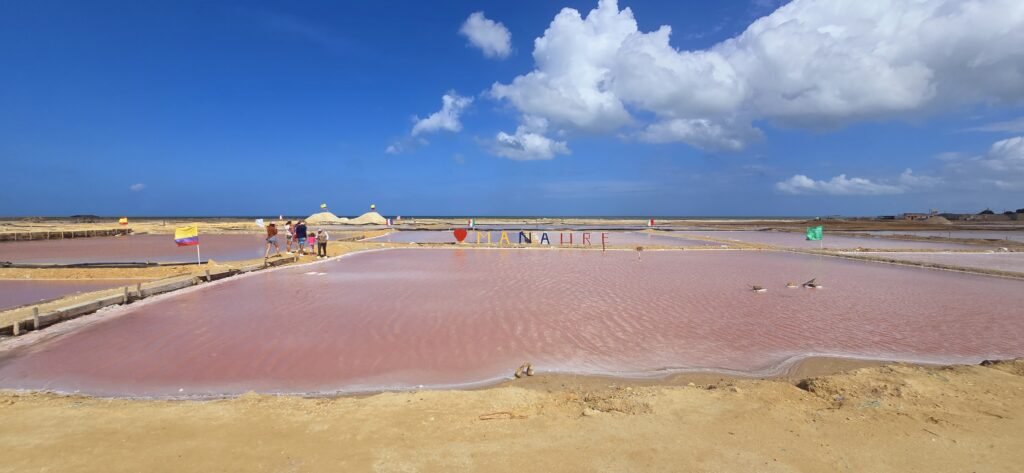
After the Salt Mines, we got back in the jeep and drove 2 hours to the hotel.
At the hotel we had lunch which was a choice of shrimp, goat, fish, chicken or vegetarian with rice, salad and yucca.
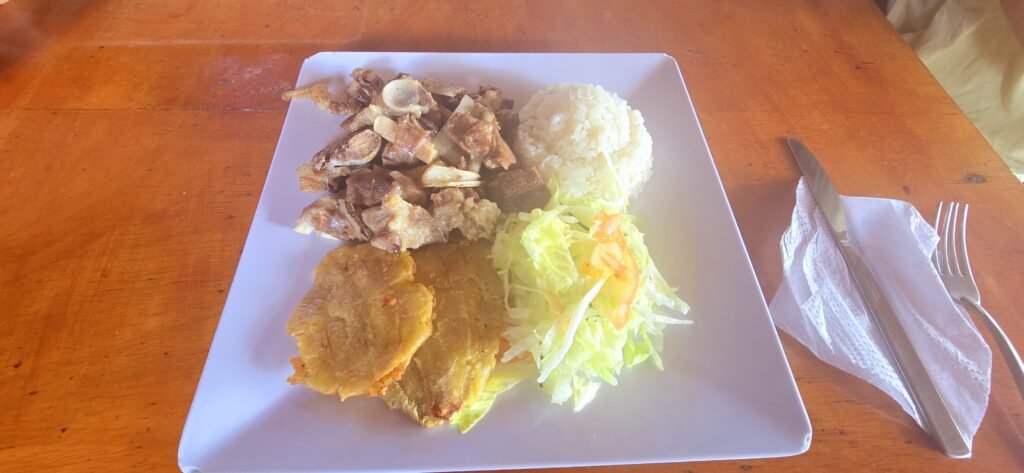

Playa Arcoíris
After lunch we drove another 2 hours to Playa Arcoiris, this beach is rough so this was for photos and fresh air only.
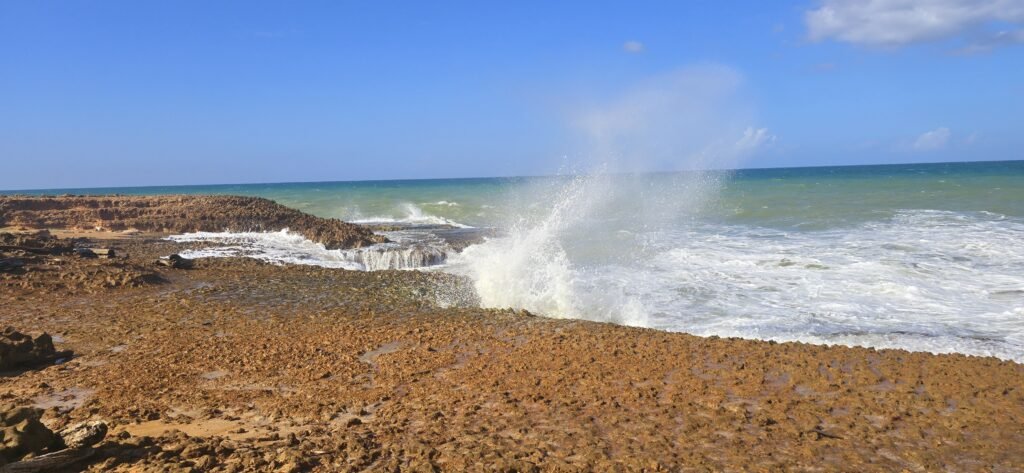
Playa del Pilon de Azúcar
After Playa Arcoiris we headed on to Playa del Pinon de Azucar. This is nice beach with calm water for swimming and small shop to buy food and drinks.
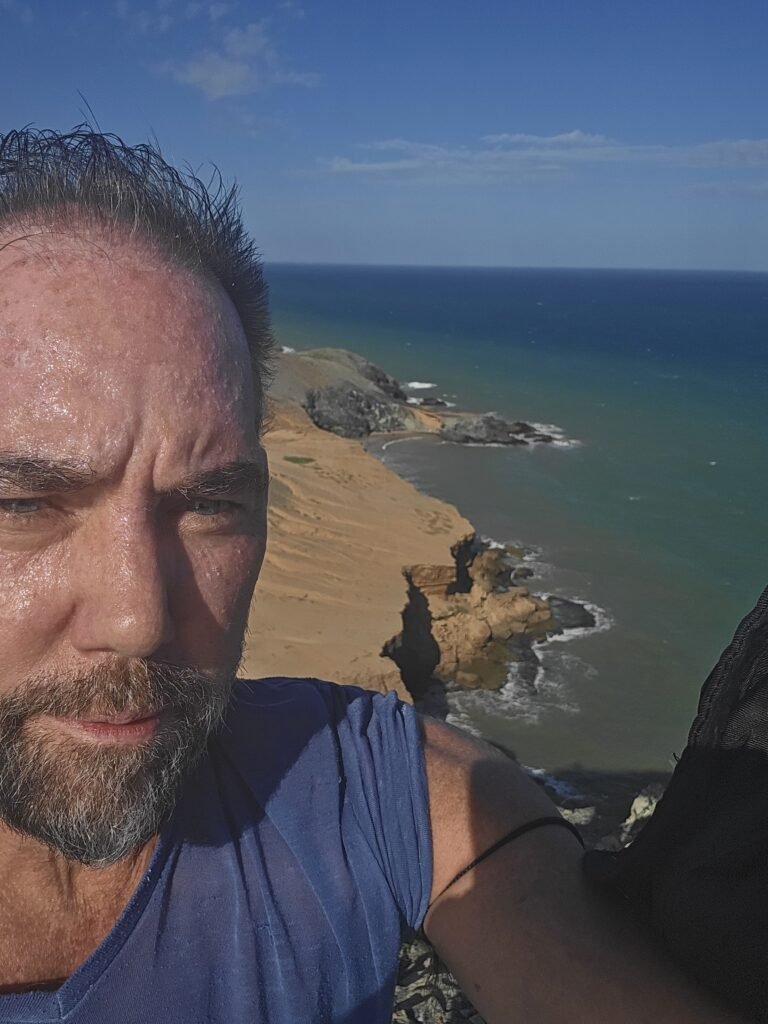

El Faro
After Playa Pilon De Azucar we headed to El Faro for sunset photos and relaxed for a a couple hours.
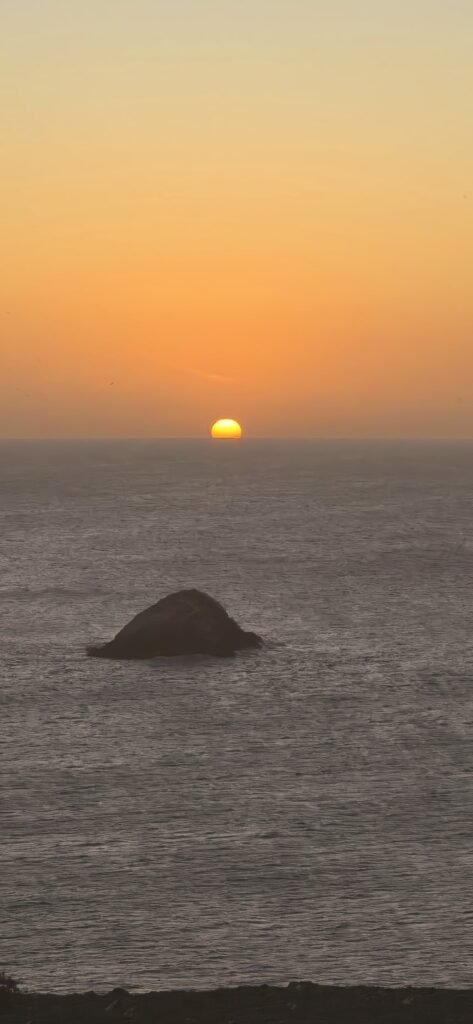
We stayed overnight at Cabo del Vela. You can stay in a cabin or in a hammock on the beach. The hammock was comfortable but felt a little unsafe, while it was covered and had a wall on 3 sides, it was right on the beach and beach is open to the public so anyone can walk in front. Also the mosquitos here were tough so they kept me awake a lot of the night.

Tour Day 2
We had breakfast and then a five hour ride to Cabo de Vela.
On day 2 we started entering Wayuu reservation territory. You will know this when you see small children holding ropes across the road (sort of an unofficial toll system). Our driver would give them rice, water, cookies or small money and they would untie th ropes and let us pass.

Cabo de Vela

This small, tranquil village is a highlight of the region. It offers mesmerizing desert landscapes that meet the ocean, along with some of the best views in Colombia. You can relax on beautiful beaches, go kite surfing, and watch the sunsets over the horizon.
Dunes of Taroa
After lunch at Cabo de Vela, we headed to the Dunes of Taroa. The dunes rise like towering, golden waves, their surfaces shifting and undulating with the breeze. The sands themselves have a strange, almost ethereal quality, shimmering with an iridescent glow at dusk,
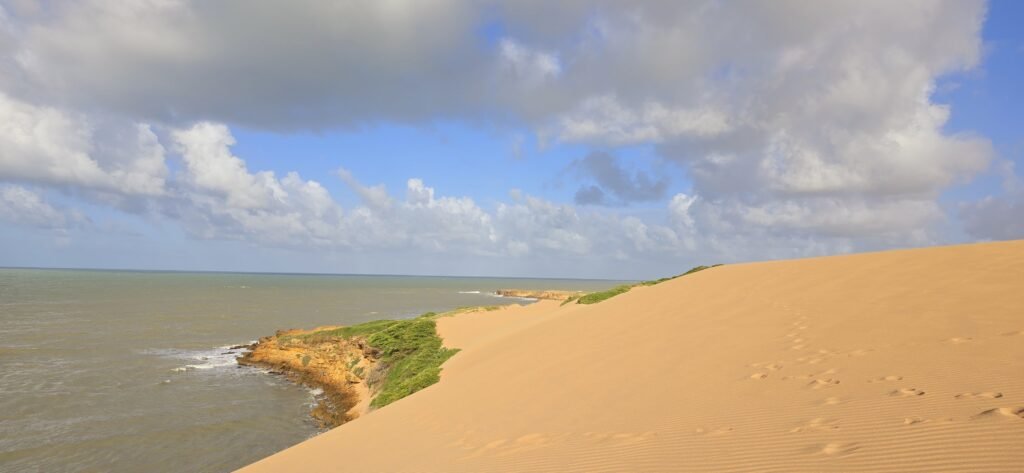
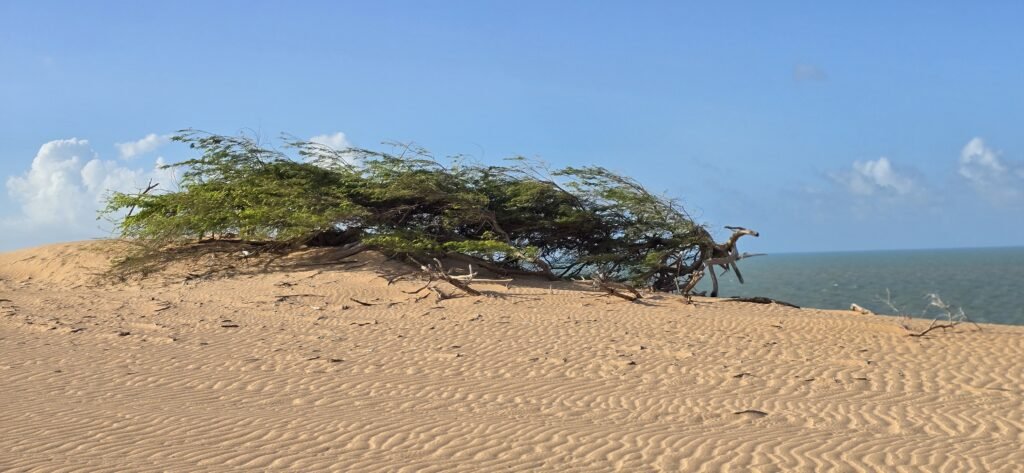

From the Dunes we headed to Point Gallinas. After the dunes, the landscape changes quickly to green with many types of cactus.
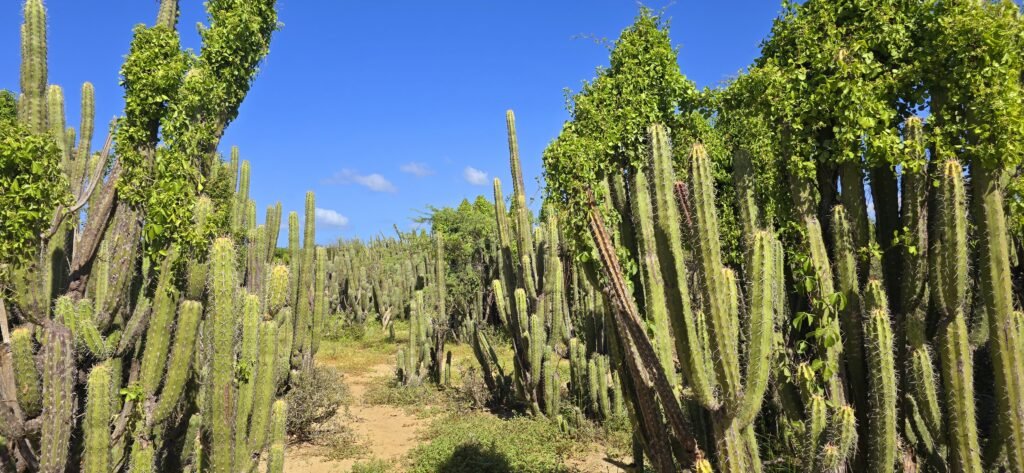
Point Gallinas
Point Gallinas is the northernmost point of South America, known for its dramatic cliffs, stunning dunes, and remote beaches. The area is accessible only by 4×4 vehicles, which adds an element of adventure to the journey.
We stayed overnight at Punto Gallinas.
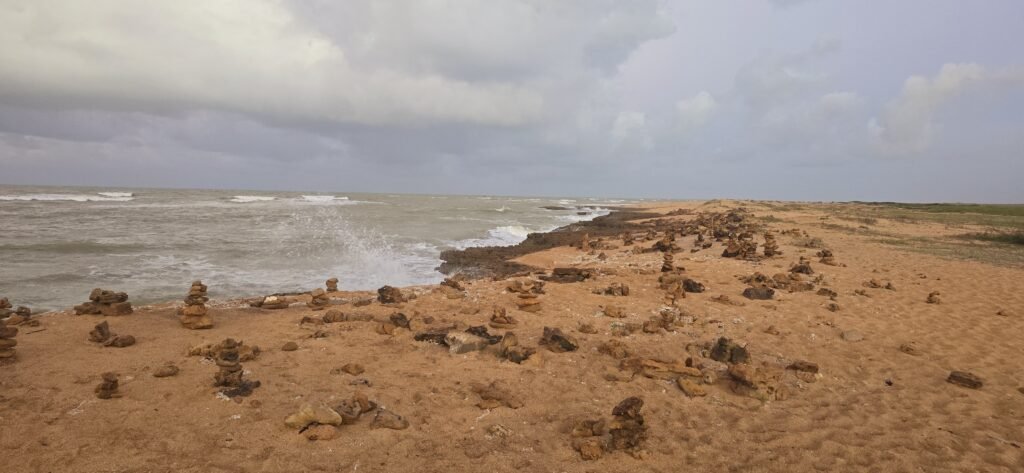
At night we met with a Wayuu guide and he explained the traditions and customs of the Wayuu people.
Tour Day 3
This day was all driving. We drove 5 hours back to Uribia. We had lunch in Uribia and then drove back to Riohacha.
We got back at 3;30 so time to make the afternoon flights at 4:30 and 5:15 to Bogota or Medellin.
Conclusion
La Guajira is a hidden gem for those seeking an off-the-beaten-path adventure in Colombia. With its starkly beautiful landscapes, rich indigenous culture, remote beaches, and desert dunes, it offers a unique combination of natural wonders and cultural experiences that are hard to find anywhere else. Whether you’re into ecotourism, cultural immersion, or simply soaking in the beauty of a less-explored region, La Guajira provides a memorable and authentic travel experience.
I do caution that that this is not an easy or luxurious trip. It’s many hours in a jeep over bad, muddy roads to see the beautiful landscapes so be prepared.
